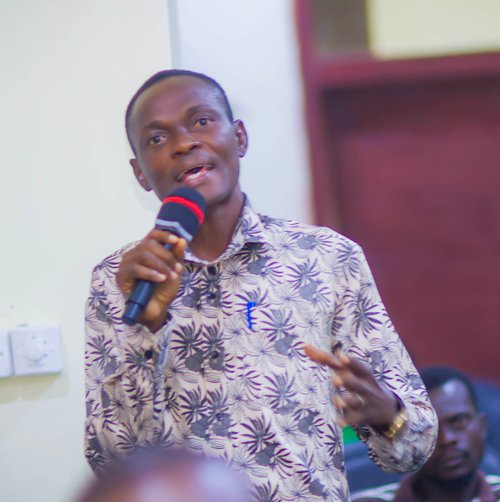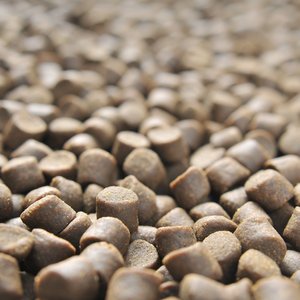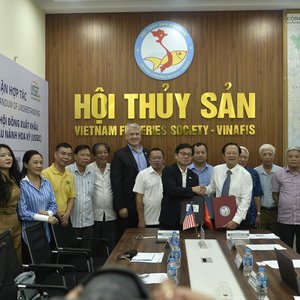Species diversification has been a matter of discussion among fish farmers in West Africa. In the past few years, it has gained prominence in Nigeria, with a few species being promoted across fish farms. In Ghana, “regular aquaculture” as has been practiced for some years is about to change. The general view of industry in the subregion is that tilapia and catfish, which were expected to plug the huge gaps between fish demand and supply, have failed to meet expectations. The solution, it appears, is to deploy species with less feed requirements.
Aquaculture has been identified as the sector with the capacity to redeem Ghana and Nigeria from the sharp decline in marine fish production, but this has not happened so far. The general view is that the West African industry has underperformed due mainly to high feed costs. More than 80 percent of Nigerian farmers produce catfish, with the others doing tilapia. In Ghana, tilapia accounted for over 90% of aquaculture production until the past few years, but catfish is catching up with tilapia, and is expected to level up in a few years.
Ghana produced only 657,000 tons out of its annual requirement of 1.3 million tons in 2022, requiring the importation of 650,000 tons at a cost of $311 million. Aquaculture production in 2022 was 133,000 tons. In the case of Nigeria, in 2022, the country produced only 1.2 million metric tonnes of fish out of its annual demand of 3.6 million metric tonnes, necessitating the importation of 2.4 metric tonnes. Aquaculture production amounted to 259,000 in 2022. Nigeria spends $1.2 billion annually on fish imports.
Diversification
Due mainly to the high cost of feed in West Africa, species diversification is gaining prominence, with fish farmers' associations encouraging farmers to grow other species with lower feed costs. Some hatcheries in Nigeria are offering fingerlings of pangasius, freshwater brama, common carp and pacu to farmers. These new species are about to become significant components of aquaculture production in Nigeria. Pangasius appears to be the preferred “new” species because, in addition to being a herbivore, it can be grown at high densities, and grows to 1.5 kg in 5 months. Unlike the black catfish whose head makes up a sizeable part of its body, 80% of pangasius’ body is made up of flesh.
However, some experts are expressing concern about the diversification development. They argue that while commercial production of local species makes economic sense, the introduction of “foreign” species like pacu and pangasius without scientific evaluation could lead to negative consequences.
The African bony tongue
The African bony tongue (Heterotis niloticus), a species that is grown all over West Africa and beyond, is an omnivore with huge potential to transform African aquaculture, but until recently it has not contributed much. It is loved for its taste in Liberia, Nigeria and Ghana, where farmers grow up to 4 kg within a year. Until recently, most of its peculiar reproduction and feeding habits precluded large-scale production. Its reproduction in captivity is low and does not readily accept commercial feed.
However, researchers in Ghana have provided some interesting results which, combined with the recent experience of some farmers, should provide Heterotis farming with a badly needed thrust. It is now possible to create their preferred dietary and environmental conditions. Robert Mensah, a farmer at Swedru in the Central Region, says that ‘we are now familiar with its feeding habits. In the wild, it eats decomposed organisms, algae, small crustaceans, mollusks, insects, hard seeds and live worms. It prefers sinking feeds to floating. It is becoming easier to grow them. I believe the feed producers will now be able to develop suitable diets.”
Progress towards optimizing large-scale production of Heterotis in Ghana has been enhanced by the recent publication of results of researchers at the Kwame Nkrumah University of Science and Technology (Prince Ofori-Darkwah and four others, published in Frontiers in Aquaculture, February 13, 2024). They investigated the challenge of high mortality rates of larvae/fry grown in captivity and reported that according to their results, “Artemia nauplii is the best live feed organism for H. niloticus larviculture”.
Promoting new species and low-cost feeds

At the Stakeholders’ Session organized by the Ghana National Aquaculture Association on July 25, Seyram Amanie-Adjei, an aquaculture consultant at the National Aquaculture Centre, said that ‘until recently, Heterotis has been processed into ‘momoni’, used for flavoring stews and soups. With the availability of more information about growing it in captivity, the association should promote its farming and processing for the local market and export’.

Professor Emmanuel Anokye Frimpong from the Fish Ecology at Virginia Polytechnic and State University and Director of CART4D Consulting Ghana, stated at the session that the fixation with Nile tilapia and African catfish production “has so far been unprofitable. They are expensive to grow, and unaffordable for the ordinary man. In our part of the world where aquaculture is a food security issue, species diversification is a must. We must encourage the production of Heterotis and other native herbivorous tilapia whose feeding and other costs are cheaper.”

Also at the Stakeholders Session, Francis Anani, senior research scientist at the Aquaculture Research Centre, presented an update on the Alternative Feed Project which is aimed at developing nutritionally sound and cost-effective fish feeds to increase and sustain aquaculture development in Ghana. Under the project, initiated by the Ghana National Aquaculture Association and the Fisheries Commission and funded by the Norwegian Agency for Development (NORAD), trials of selected formulas have been ongoing at three farm locations for 20 weeks. Dr Anani reported that “data collected so far indicate that all the feeds are of good quality, and we expect that we will soon arrive at our objective of delivering good quality fish feed to farmers at affordable prices”.
NORAD is sponsoring another project aimed at promoting alternative, affordable fish feed in Africa. Development and Scaling of Sustainable Feeds for Resilient Aquatic Food Systems in Sub-Saharan Africa (FASA), a WorldFish-administered project with NOK 80 million (USD 8 million) funding by the Norwegian Agency For Development (NORAD), is running from 2022 to 2027. Under the project, 5,000 aquatic food producers in Kenya, Zambia and Nigeria are being assisted to test and use low-cost feeds based on alternative ingredients.










